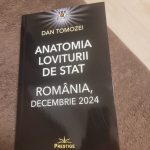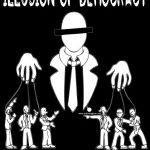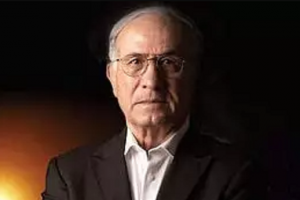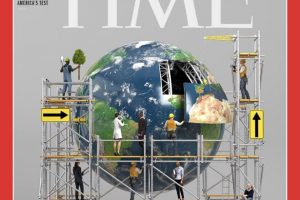 It’s no secret that many of the world’s largest industrialized nations are somewhat eager to ease their reliance on the U.S. dollar. For months China and Russia have pushed ever subtly, for a new “global reserve currency,” to give governments around the world enhanced economic stability in the event of greater fluctuations in the dollar’s value.
It’s no secret that many of the world’s largest industrialized nations are somewhat eager to ease their reliance on the U.S. dollar. For months China and Russia have pushed ever subtly, for a new “global reserve currency,” to give governments around the world enhanced economic stability in the event of greater fluctuations in the dollar’s value.
But what wasn’t known, until recently, is how far along the International Monetary Fund was in the planning of elevating its so-called “special drawing rights” from mere international agreement to an actual, legitimate global currency.
The report examines what it calls the “imperfections” of the global reserve banking structures, and how hoarding of reserves by sovereign nations can subject the system to risk and occasional shocks.
In 35 pages of extrapolation and footnotes, the IMF’s Strategy, Policy and Review Department lays out the how and why of a global currency, which would move from an “inside money” as the SDR to an “outside money” that is traded by governments.
However, they conclude that “the ideas discussed are unlikely to materialize in the foreseeable future absent a dramatic shift in appetite for international cooperation.”
The PDF document appeared to have been taken offline at time of this writing, but a cached version was still available. The document is from April, but was only recently noticed byFinancial Times.
“[In] the eyes of the IMF at least, the best way to ensure the stability of the international monetary system (post crisis) is actually by launching a global currency,” they note.
“And that, the IMF says, is largely because sovereigns — as they stand — cannot be trusted to redistribute surplus reserves, or battle their deficits, themselves.”
The IMF goes on to explain:
Reserve accumulation has accelerated dramatically in the past decade, particularly since the 2003-4. At the end of 2009, reserves had risen to 13 percent of global GDP, doubling from their 2000 level, and over 50 percent of total imports of goods and services. Emerging market holdings rose to 32 percent of their GDP (26 percent excluding China). Twenty-seven of the top 40 reserve holders, accounting for over 90 percent of total reserve holdings, recorded doubledigit average growth in reserves over 1999-2008.
Holdings have also become increasingly concentrated, with over half the total held by only five countries. These numbers exclude substantial foreign assets of the official sector not recorded as reserves, including in sovereign wealth funds (SWFs), and yet invested in liquid, dollar denominated financial instruments, that have grown even more in recent years.
The global currency IMF envisions, they simply call “bancor”. They continue:
though an SDR-based system would move away from a dominant national currency, the SDR’s value remains heavily linked to the conditions and performance of the major component countries. A more ambitious reform option would be to build on the previous ideas and develop, over time, a global currency. Called, for example, bancor in honor of Keynes, such a currency could be used as a medium of exchange—an “outside money” in contrast to the SDR which remains an “inside money”.
Were the industrial nations of the world to agree to the IMF’s prescription for the global financial system, the fund would undertake a new realm of responsibilities. It describes them as:
Encouraging reserve holders to adjust the currency composition of reserves onlygradually and discourage any “active” currency management that could potentially causelarge swings between reserve currencies.
Requiring all reserve holding members to report their reserve composition to the Fund (possibly confidentially) including information on reserve holder’s benchmark for the currency composition of reserves. Using this information, the Fund could advise reserve holders on the pace of reserve diversification (if and when the latter express interest inadjusting the currency composition of their reserves) to maintain stability in theadjustment process, including during the transition phase to a balanced reserve system. For instance Truman and Wong (2006) propose an international reserve diversificationstandard comprising two basic elements: (i) routine disclosure of the currency composition of official foreign exchange holdings; and (ii) a commitment by reserveholders to adjust gradually the actual currency composition of its reserves to any newbenchmark for those holdings.
Engaging with potential major reserve issuers to help remove obstacles to broader use oftheir currencies, if the authorities so desire.
Considering mechanisms to facilitate the use of emerging market assets to draw liquiditywith greater certainty to attenuate their demand for hard-currency reserves.
The report was issued months before a recent United Nations Economic and Social Council called on nations to move away from the dollar as their reserve currency. The U.N. based its advice on the adverse effects felt by developing nations that were hit especially hard during the 2008-2009 U.S. economic instability.
President Obama, Treasury Secretary Geithner and Federal Reserve Chairman Ben Bernanke have steadfastly maintained that the world does not need a new reserve currency.
To the contrary, Russia has predicted the world is a mere decade away from that inevitability.
“There is a need to make the IMF a true representative of the world’s leading economies. It’s not there right now,” said Russian Finance Minister Alexei Kudrin during a June 2009 economic forum, noting that China had a lower representation quota than Switzerland or Belgium.
Stephen C. Webster
sursa: rawstory.com












Adauga comentariu